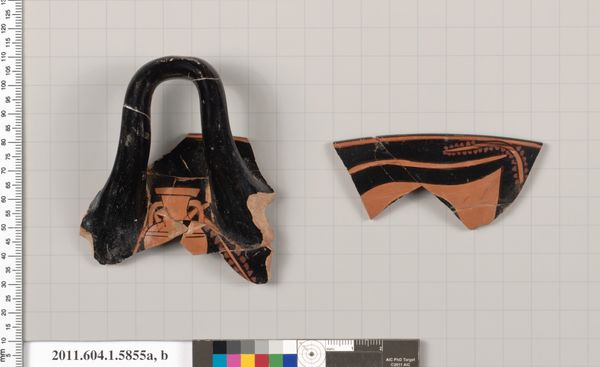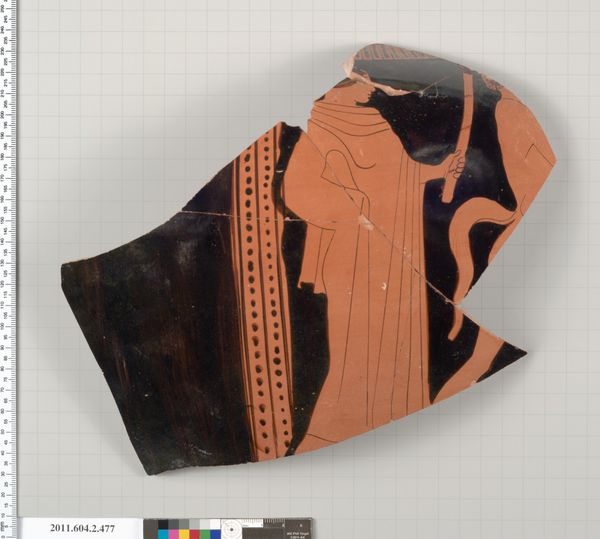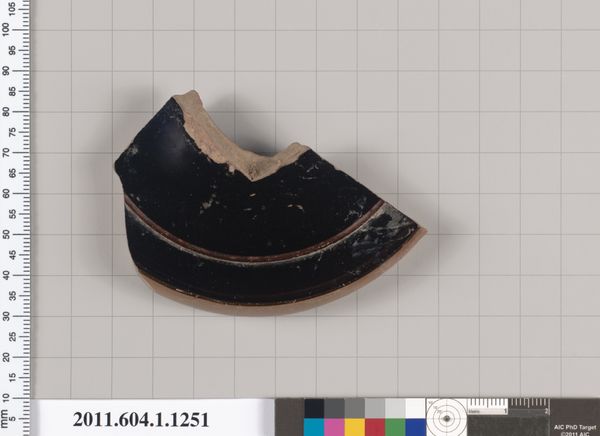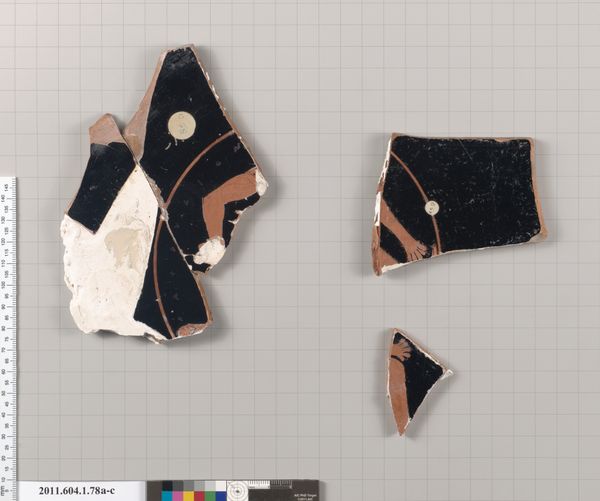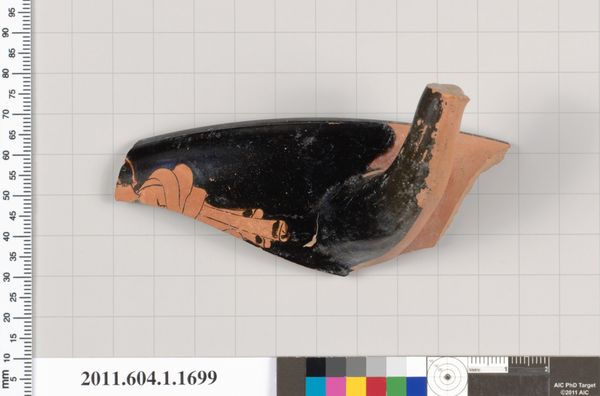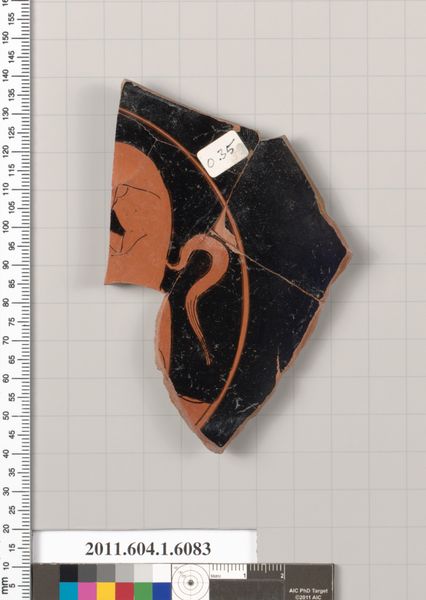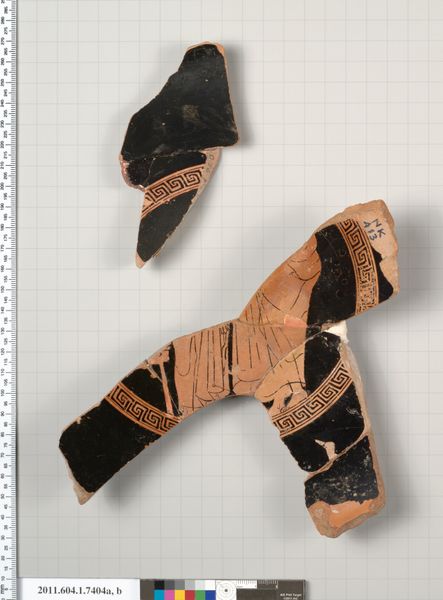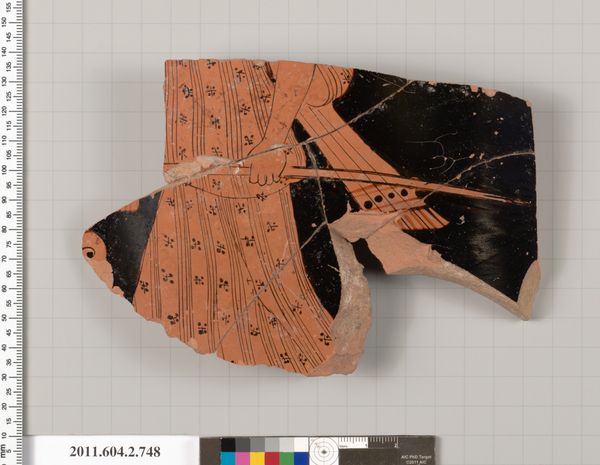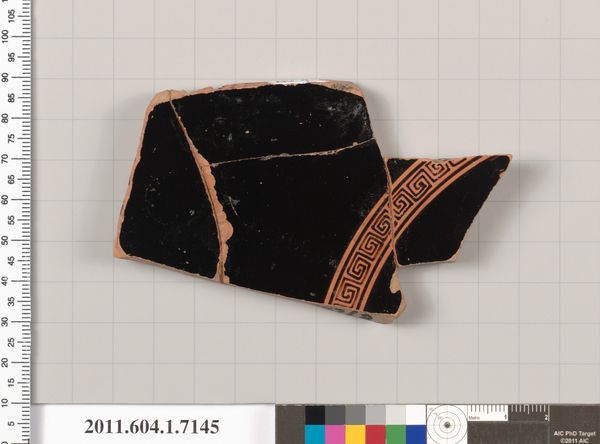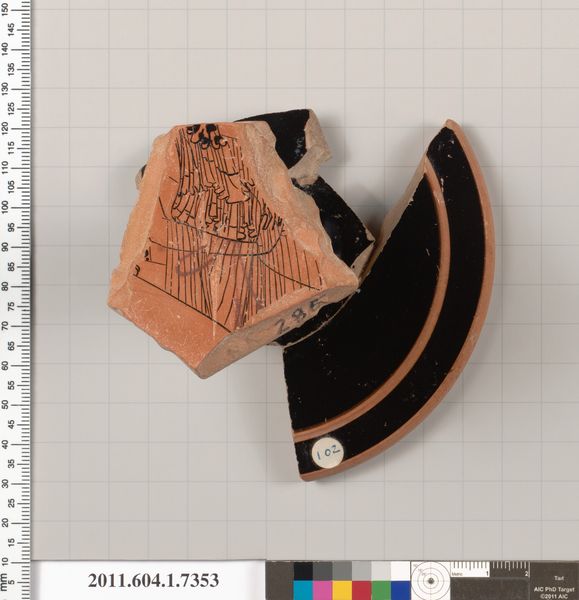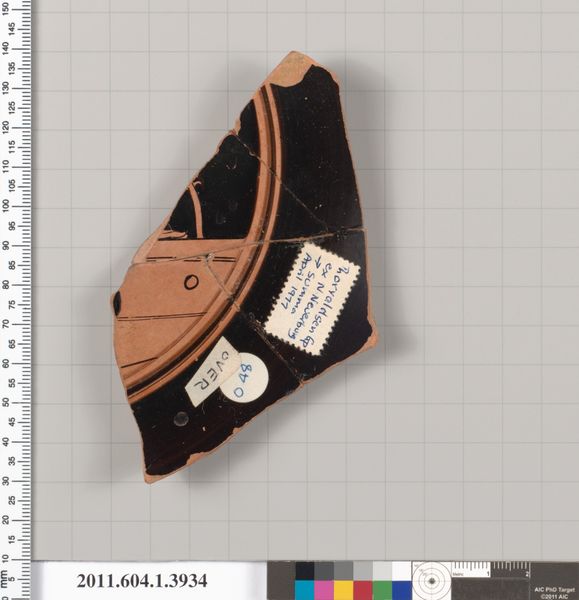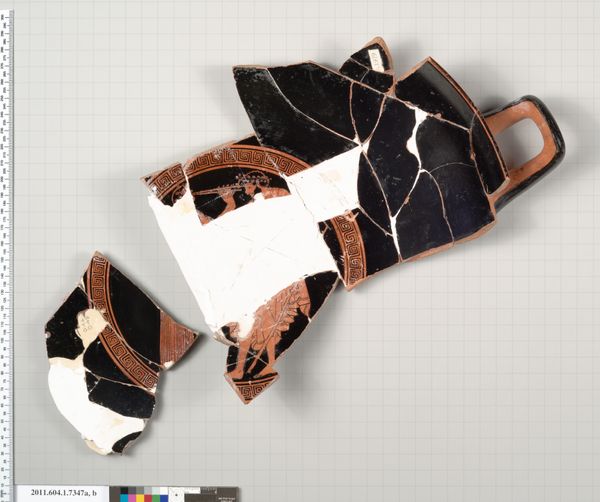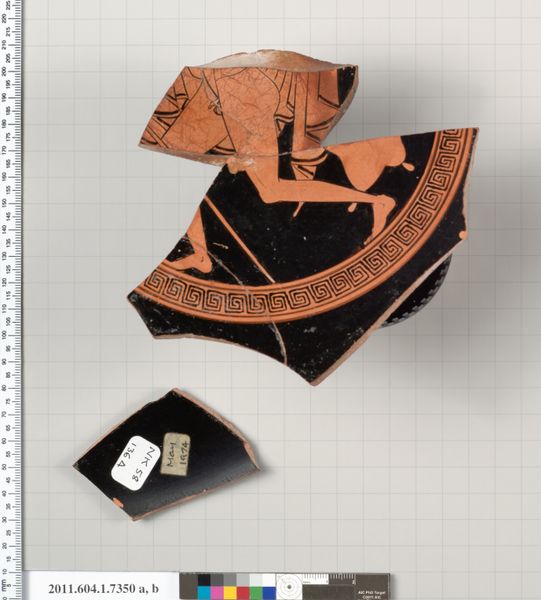
drawing, ceramic
#
drawing
#
greek-and-roman-art
#
ceramic
#
figuration
#
ancient-mediterranean
Copyright: Public Domain
Curator: We're looking at a terracotta fragment, part of a kylix, or drinking cup, crafted around 530 BC, and believed to be by the artist Makron. Editor: My initial thought? A powerful silhouette. That stark contrast between the black glaze and the terracotta figures just pops, even with the damage. Curator: The damage does tell a story, doesn't it? Imagine the lives this cup has lived, the hands it passed through, before ending up here in the Metropolitan Museum of Art. The fragment showcases figures rendered in that iconic red-figure technique. What I find amazing is how they managed such detail on a curved surface. Editor: Exactly! Thinking about the materiality of it all... the specific type of clay, the firing process, and the labor involved in creating both the cup itself and the intricate decoration. That glossy black slip wasn't just brushed on; it was carefully applied. These weren't just objects of beauty; they were also objects of production, made within a specific social and economic context. Curator: I like to think about the person who held it, perhaps at a symposium, engaged in lively philosophical debate, or reciting poetry... This fragment, it holds a little piece of their world. You can almost feel the warmth of the kiln where it was fired, see the artist hunched over, meticulously painting each figure with a brush made from, who knows what? Maybe even a cat's whisker? Editor: Right, but it's crucial not to romanticize. The availability of this kind of finely decorated pottery signals a level of social stratification and access to resources. Someone made this for someone else, likely in service of specific rituals or demonstrations of wealth. The imagery may show people drinking but also obscures realities in this society. Curator: A point well taken! It reminds us that beauty, even in these broken forms, can be a window into the complexities of a society long gone, inviting us to ponder their stories and our own. Editor: Precisely. It is about understanding the journey from clay pit to museum display case. It prompts us to reflect on the enduring significance of craft and labor in art history.
Comments
No comments
Be the first to comment and join the conversation on the ultimate creative platform.
